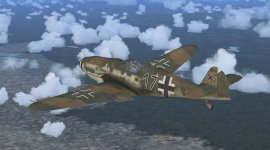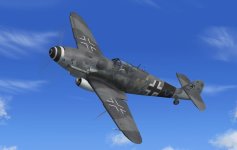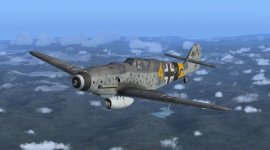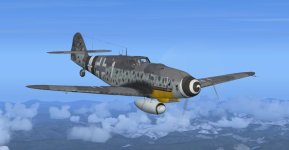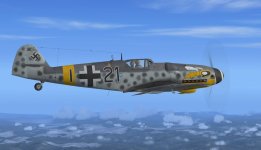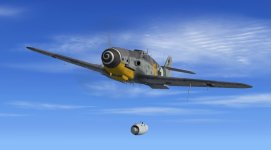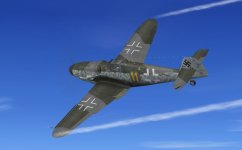Team Daedalus
Members +
by Design Team Daedalus
Unit: 2./NAG 14 W.Nr. 463141
Pilot: unknown, surrendered at Furth-Atzenhof airfield on May 8, 1945. Although 2./NAG 14 was a short range reconnaissance unit, this aircraft was not equipped with cameras.
The first Bf109G-14 fighters reached front line units in the summer of 1944. It was flown by virtually all of the Bf109 equipped units.
The G-14 version was an attempt to standardize a new type that would incorporate all of the plethora of changes introduced during the production of the G-6. The many changes and the ensuing problems associated with decentralized mass production had led to a great number of G-6 variations.
The effort was a complete failure because the G-14 wound up with as many variations as the G-6. Some had the small tail of the earlier G-6 while some had a tall rudder which came in several different versions. Some were wood, some were fabric covered, some had a rounded lower rear edge, some had a sharp angled rear edge and there were several variations of trim tabs. There were different antenna types and some had no antenna at all.
However there were some standards. It was powered by the DB605 AM engine with MW-50 injection and had the Erla Haube canopy. Most all had the FuG 16ZY radio with the antenna mast installed under the port wing outboard of the wheel well.
Pstrany developed the models using Paul Rebuffat's Messerschmitt model - with permission - as a starting framework and updated the shape, and added a plethora of details, new parts, and ideas. Pstrany also developed the models for the drop tanks, weapons and racks.
Captain Kurt created paints for each, the 2D instrument panel, the individual .dp files, the air files and the aircraft.cfg files.
Mav SCASM edited each model so that they have animated wing slats, drop tanks, and other features, as well as optimizing models for the best possible framerates. Mav also developed the idea for the 2d panel to be offset for the Revi gunsight to match the CFS2 reticle.
We have all benefited from the assistance and guidance of others in the community, Special thanks to Wolfi and Huub Vink for their kind assistance and to all who have contributed their knowledge directly and indirectly.

